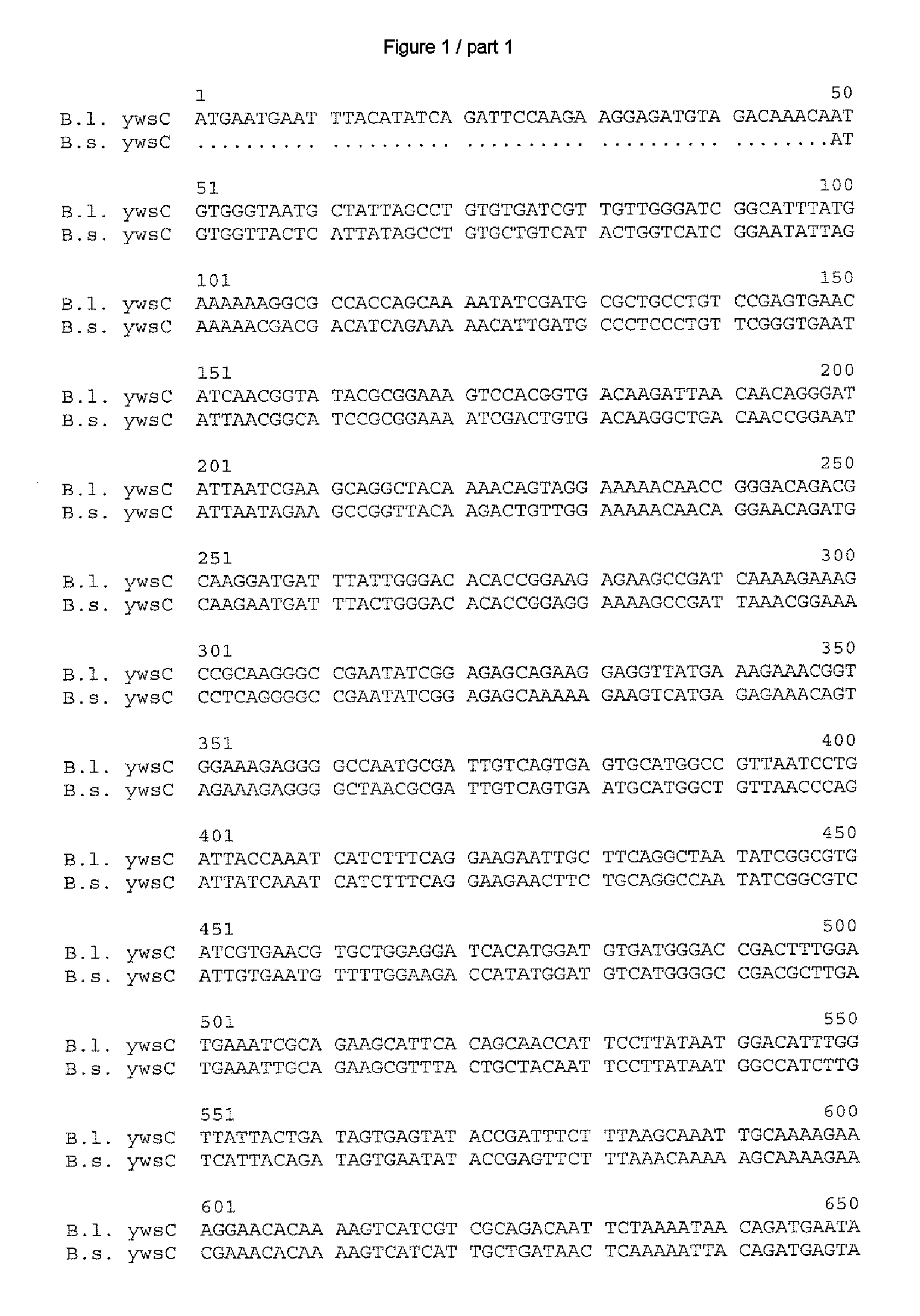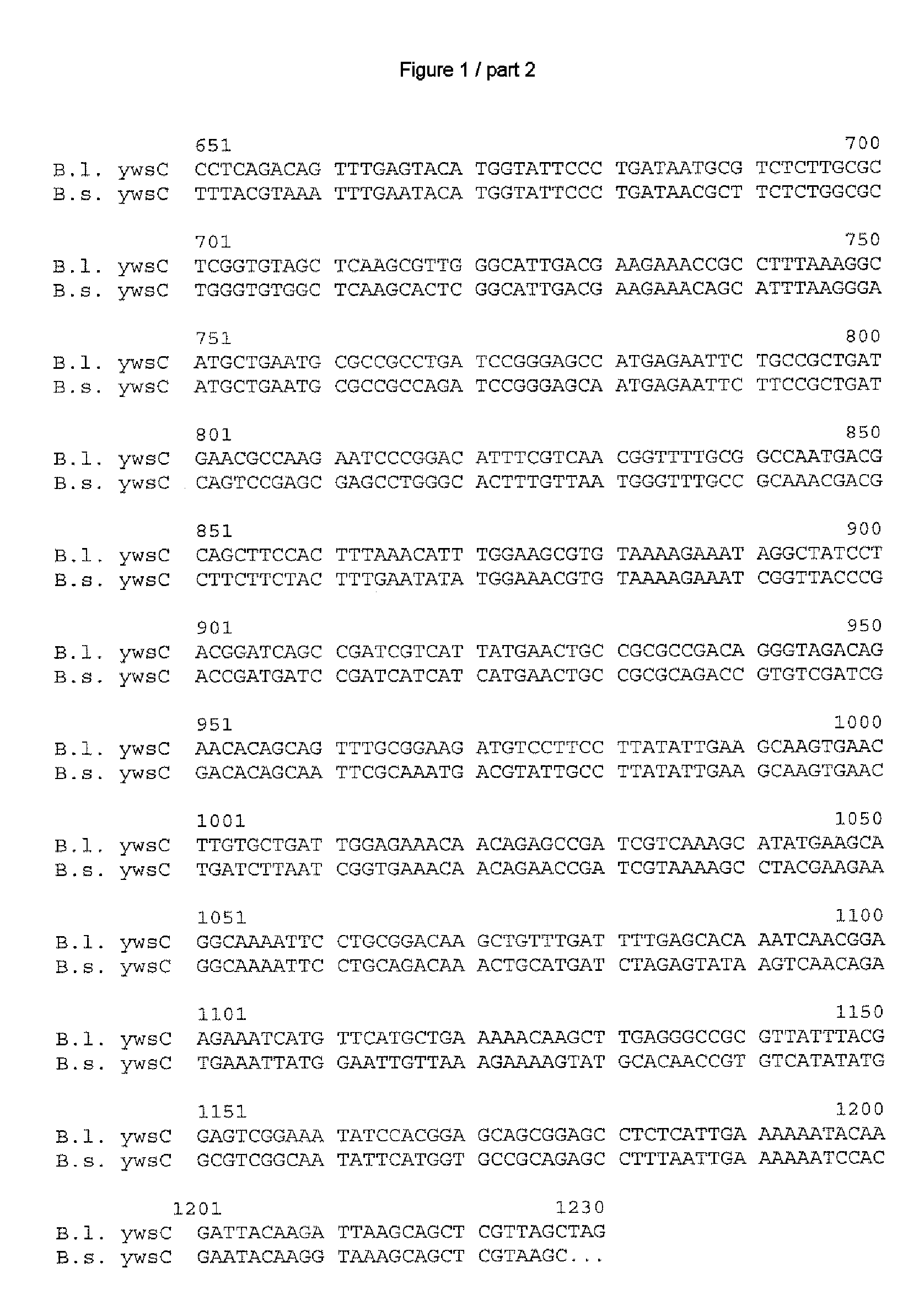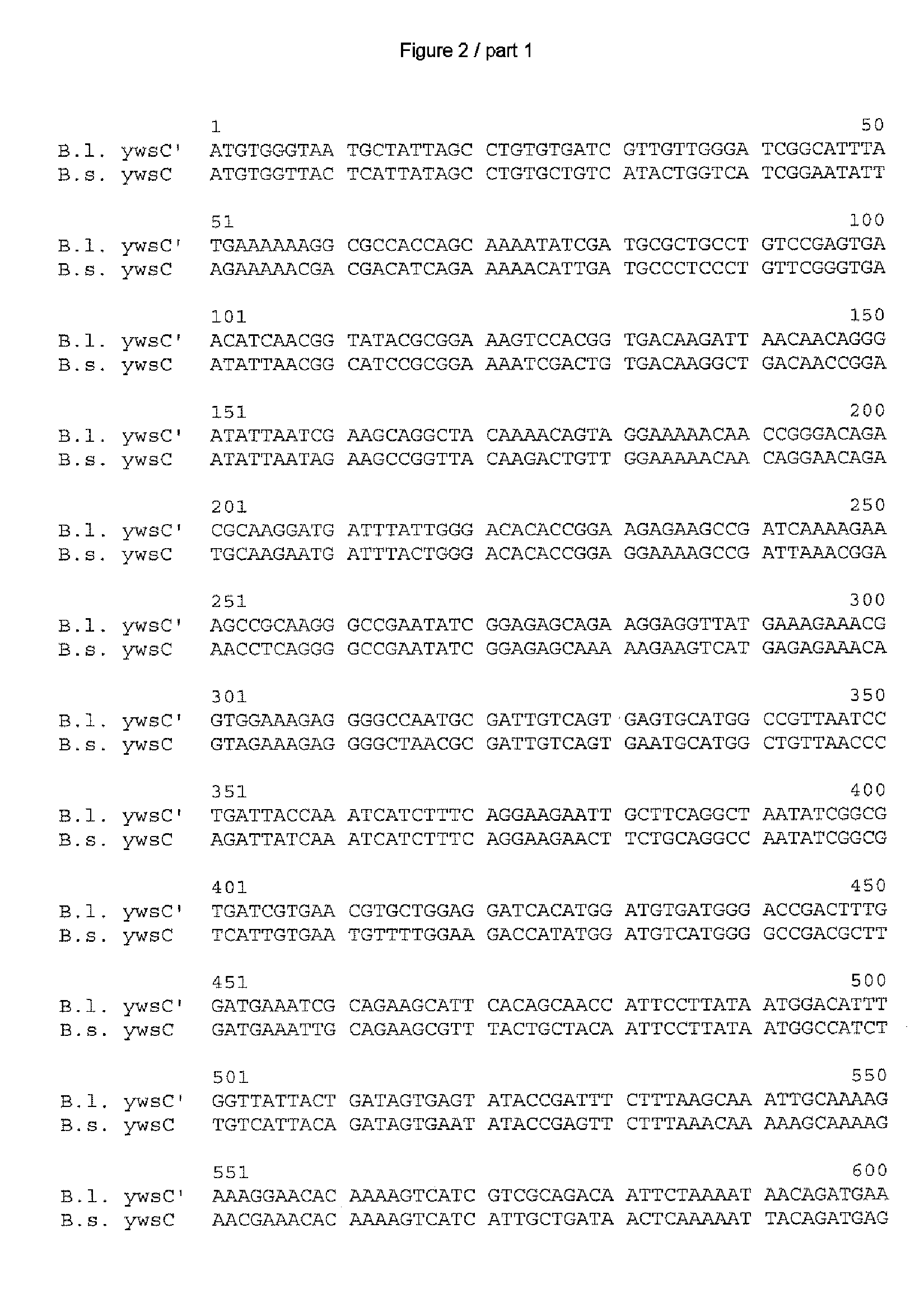Novel Gene Products From Bacillus Licheniformis Forming Or Decomposing Polyamino Acids And Improved Biotechnological Production Methods Based Thereon
- Summary
- Abstract
- Description
- Claims
- Application Information
AI Technical Summary
Benefits of technology
Problems solved by technology
Method used
Image
Examples
example 1
Identification of the Genes ywsC, ywsc, ywtA, ywtB and ywtD from B. licheniformis DSM 13
[0169] The genomic DNA was prepared by standard methods from the strain B. licheniformis DSM 13, which is available to anyone from the Deutsche Sammiung von Mikroorganismen und Zelikulturen GmbH, Mascheroder Weg 1 b, 38124 Braunschweig (http: / / www.dsmz.de), mechanically fractionated and fractionated by electrophoresis in a 0.8% agarose gel. For a shotgun cloning of the smaller fragments, the fragments 2 to 2.5 kb in size were eluted from the agarose gel, dephosphorylated and ligated as blunt-ended fragments into the Smal restriction cleavage site of the vector pTZ19R-Cm. This is a derivative which confers chloramphenicol resistance of the plasmid pTZ19R which is obtainable from Fermentas (St. Leon-Rot). A gene library of the smaller fragments was obtained thereby. As second shotgun cloning, the genomic fragments obtained by a partial restriction with the enzyme Saullial were ligated into the Su...
example 2
Sequence homologies
[0173] After ascertaining the DNA and amino acid sequences as in Example 1, in each case the most similar homologs disclosed to date were ascertained by a search in the databases GenBank (National Center for Biotechnology Information NCBI, National Institutes of Health, Bethesda, Md., USA; http: / / www.ncbi.nlm.nih.gov) and Subtilist of the Institute Pasteur, Paris, France (http: / / genolist.pasteur.fr / Subtilist / genome.cgi).
[0174] The ascertained DNA and amino acid sequences were compared with one another via the alignments depicted in FIGS. 1 to 10; the computer program used for this was Vector NTI® Suite Version 7 which is obtainable from Informax Inc., Bethesda, USA. In this case, the standard parameters of this program were used, meaning for comparison of the DNA sequences: K-tuple size: 2; Number of best Diagonals: 4; Window size: 4; Gap penalty: 5; Gap opening penalty: 15 and Gap extension penalty: 6.66. The following standard parameters applied to the compar...
example 3
Functional Inactivation of one or more of the Genes ywsC, ywsc′, ywtA and ywtB in B. Licheniformis
[0176] Principle of the preparation of a deletion vector
[0177] Each of these genes can be functionally inactivated, for example, by means of a so-called deletion vector. This procedure is described per se for example by J. Vehmaanpera et al. (1991) in the publication “Genetic manipulation of Bacillus amyloliquefaciens”; J. Biotechnol., volume 19, pages 221-240.
[0178] A suitable vector for this is pE194 which is characterized in the publication “Replication and incompatibility properties of plasmid pE194 in Bacillus subtilis” by T.J. Gryczan et al. (1982), J. Bacteriol., volume 152, pages 722-735. The advantage of this deletion vector is that it possesses a temperature-dependent origin of replication. pE194 is able to replicate in the transformed cell at 33° C., so that initial selection for successful transformation takes place at this temperature. Subsequently, the cells comprising...
PUM
| Property | Measurement | Unit |
|---|---|---|
| Fraction | aaaaa | aaaaa |
| Fraction | aaaaa | aaaaa |
| Fraction | aaaaa | aaaaa |
Abstract
Description
Claims
Application Information
 Login to View More
Login to View More - R&D
- Intellectual Property
- Life Sciences
- Materials
- Tech Scout
- Unparalleled Data Quality
- Higher Quality Content
- 60% Fewer Hallucinations
Browse by: Latest US Patents, China's latest patents, Technical Efficacy Thesaurus, Application Domain, Technology Topic, Popular Technical Reports.
© 2025 PatSnap. All rights reserved.Legal|Privacy policy|Modern Slavery Act Transparency Statement|Sitemap|About US| Contact US: help@patsnap.com



